Easy Fence for Women to Put in
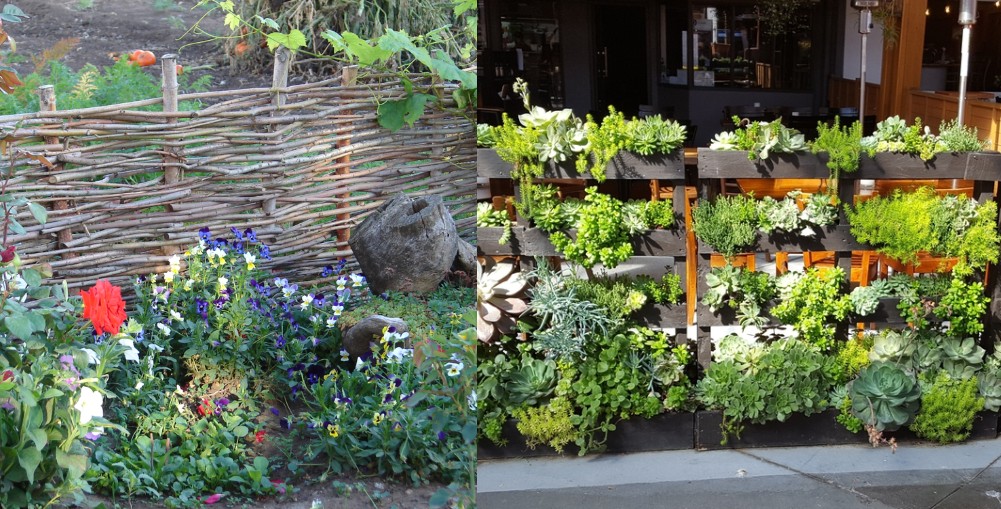
The very first fences were put up in the Neolithic era, right around the time humans settled in one spot and began to farm.
Fences provide security and privacy, and have long been used as a way to protect our stuff.
Whether you wish to keep your animals in and predators out, protect your garden crops from foraging wildlife, erect a boundary around your entire perimeter, demarcate areas within your property, or create a secluded spot away from the prying eyes of your neighbors – there are plenty of inexpensive fence construction techniques that use locally sourced, scavenged, or recycled materials.
Some of these fencing methods are ancient and somewhat forgotten, but it just goes to show that if you have an abundance of something in your area – be it wood or stones or brush – you too can build a functional and beautiful fence.
1. Simple Pallet Fence
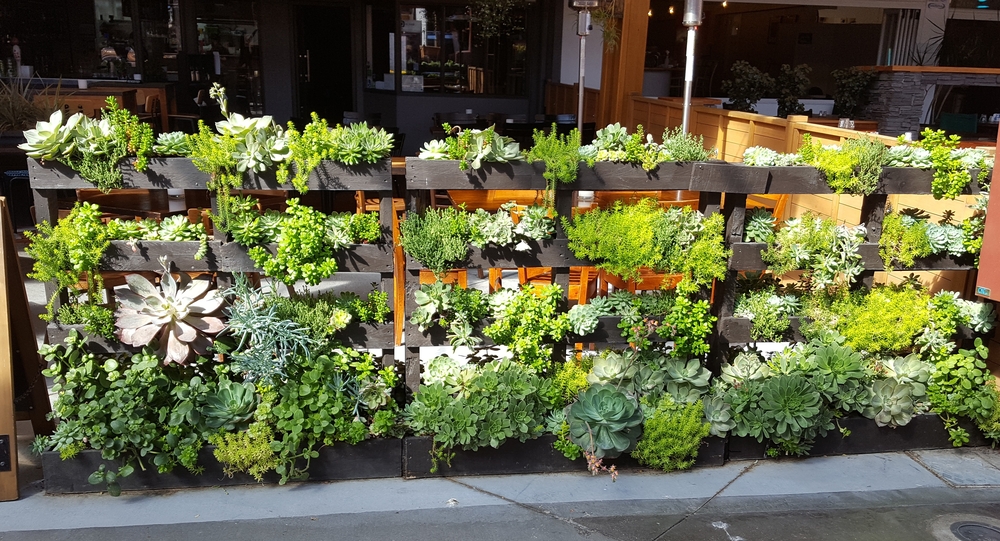
A very basic and very low cost option, the pallet fence is a quick and easy project that will only take a few hours to set up.
The build itself is super simple: pallets are set up one by one, with T-posts inserted in the space between the pallet boards and driven into the ground to keep the fence stable and upright. As pallets are added, they are secured together with screws.
The result is a strong and good looking fence doesn't look hobbled together like some other pallet fence builds. Slap a coat of paint on there to make it look even nicer. Or consider planting herbs or flowers for a brilliant vertical garden idea.
2. Deconstructed Pallet Fence
Aside from pallets being free (or very cheap) to source, they are also constructed from high quality wood since their original purpose in the shipping industry is to hold loads of over 2,000 pounds.
So stripping a pallet of its wood is definitely worth the effort.
You'll need quite a lot of pallets, but in the end you should have a pile of wooden boards, 4 feet in length. With that, you can build a professional looking fence – like this 6 foot privacy fence with a slatted top panel and a warm wood stain finish.
For a build of this height, you will need to acquire 8 foot posts and some post crete to keep it all in place.
Tutorial: How to Build a Fence with Pallet Materials.
3. Split Rail Fence
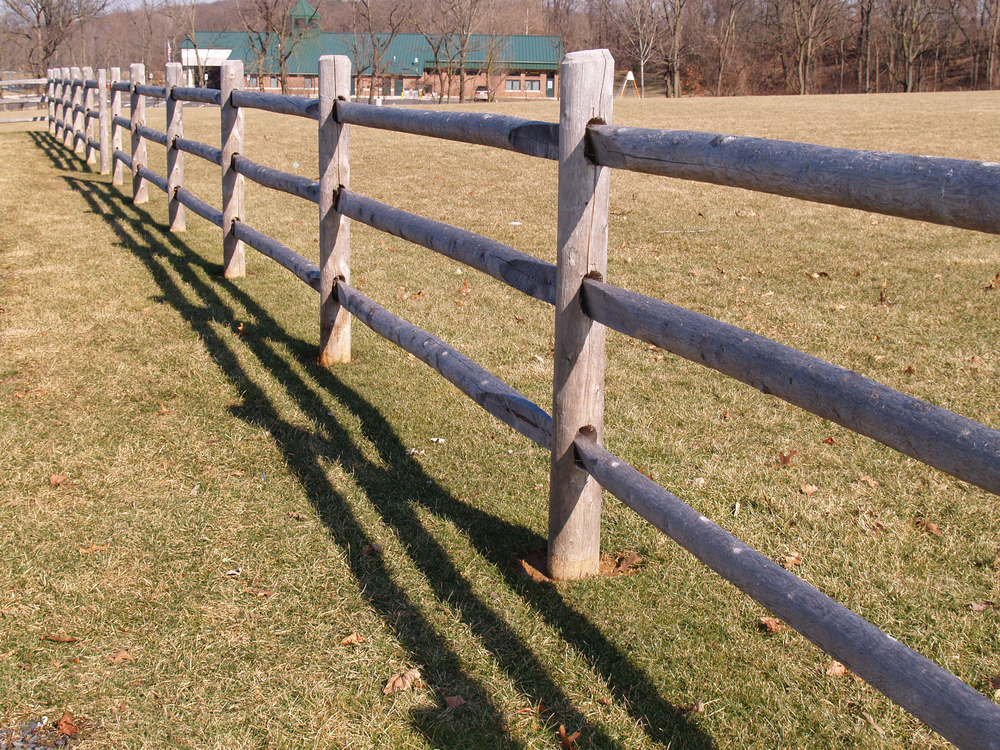
For that pastoral look, split rail fences are an age-old fencing option that was especially popular among settlers in the new world.
The original design requires no special tools or hardware – just an abundance of rot-resistant wood logs that were split into quarters or eighths.
Rails were stacked, in an interlocking zigzag pattern, making them sturdy and self-supporting. Split rail fences built this way are easy to put up and take down, as needed.
For a more modern take, fence posts are drilled all the way through so that the rails can be inserted into the slots. Add some wire mesh to make the enclosure more secure.
You can purchase split rail fencing materials at most hardware stores, but the original way to do it is to split the logs yourself.
4. Brush Fence
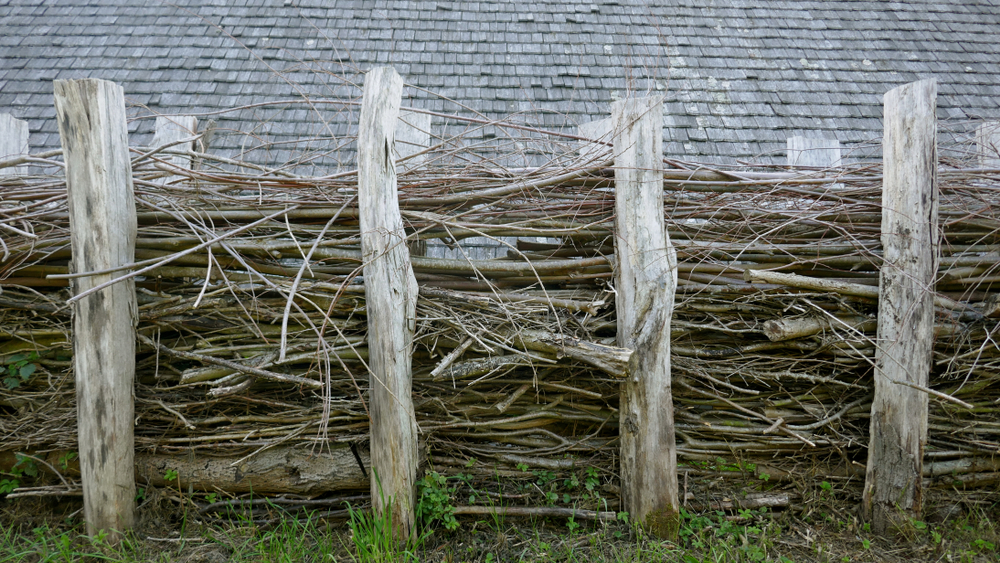
Another old timey fencing type, brush fences were built by stacking cleared brushwood – consisting of small trees or twiggy vegetation – until it forms a structure several feet tall and wide.
When complete, brush fences were practically impenetrable because of the dense thicket of twigs and branches.
A more refined, but still low tech approach, as seen here, involves long branches laid between parallel sets of thick wooden poles. Flexible twigs can used to create a gorgeous arbor.
For a sturdier build, galvanized steel posts make up the frame with bundles of brush placed vertically between wire to keep its shape. This fence is finished with a rounded cap of brushwood that runs along the top.
5. Wattle Fence
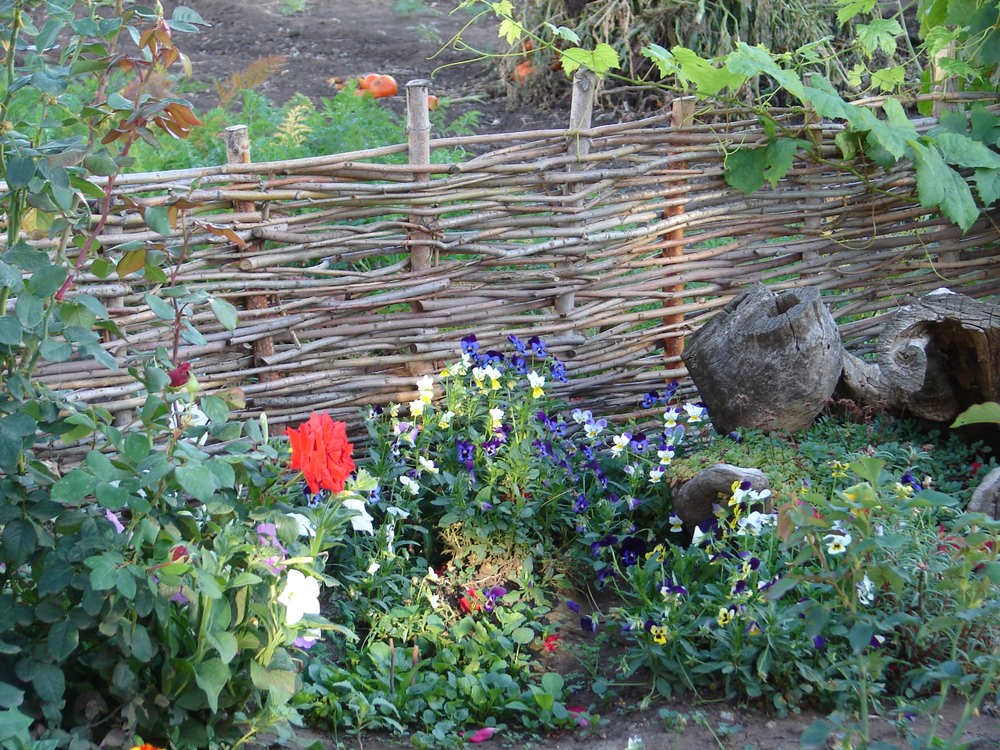
Wattle is a very simple building technique that has been in use for at least 6,000 years.
Made from 100% wood, it requires no hardware or tools to make and relies wholly on tension to keep it upright and strong.
To make a wattle fence, you'll need pieces of older, heavier wood as the posts. These are driven into the ground to a depth of a foot, each one to two feet apart. The closer they are together, the stronger your finished fence will be.
Weaver branches – young, green wood that is about 1 to 2 inches in diameter – are interwoven between the posts. The best wood for this is flexible branches, such as willow and hazel. Branches should be 4 to 6 feet long, or long enough to span at least three posts.
Aesthetically, wattle fencing has a wonderful rustic look. Plant clematis or other climbing plants along it to create a living wall.
6. Dry Stone Wall
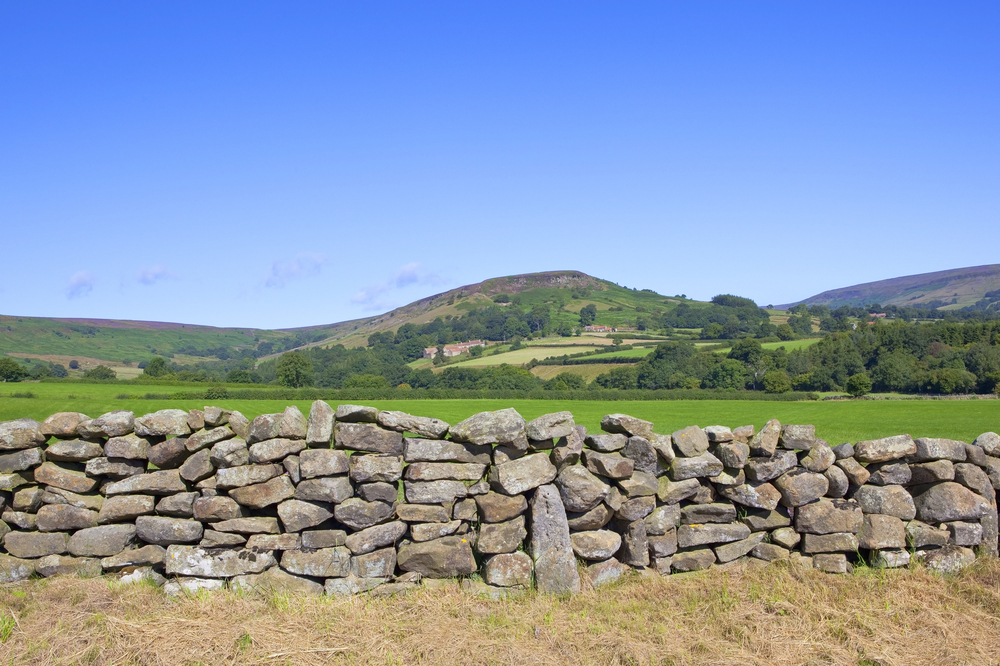
Dry stone is another ancient method for building standalone or retaining walls from stones of varying sizes. This is accomplished without any mortar holding them together.
Sourced from the field or quarry, larger and flatter stones are carefully placed in an interlocking fashion while smaller stones are used to the fill gaps between. Broader at its base and tapered toward the top, dry stone walls are easy on the eyes while also being incredibly strong and durable.
It's an easy enough technique to learn but will take time to truly master.
Building a dry stone wall is a labor of love that requires plenty of improvisation on the part of the builder.
7. Beautify a Chain-Link Fence
Chain-link fences are inexpensive, long lasting, and easy to build. The main drawback is their cold, steely, institutional look.
If you already have chain-link fencing on your property, it's not difficult to transform it into something a bit more homey.
One way to do it is to remove the wire mesh and the rails that run along the top of the chain-link so that all you are left with are the metal posts.
Each post is then covered up with a sleeve made of wood that is inserted into the post. Once all the sleeves are on the posts, wooden slats are laid horizontally and attached to each post.
The finished product is a much more handsome fence that looks great on both sides and saves you the step of driving and securing your fence posts.
Tutorial: How to Upgrade a Chain-Link Fence.
8. Hedging
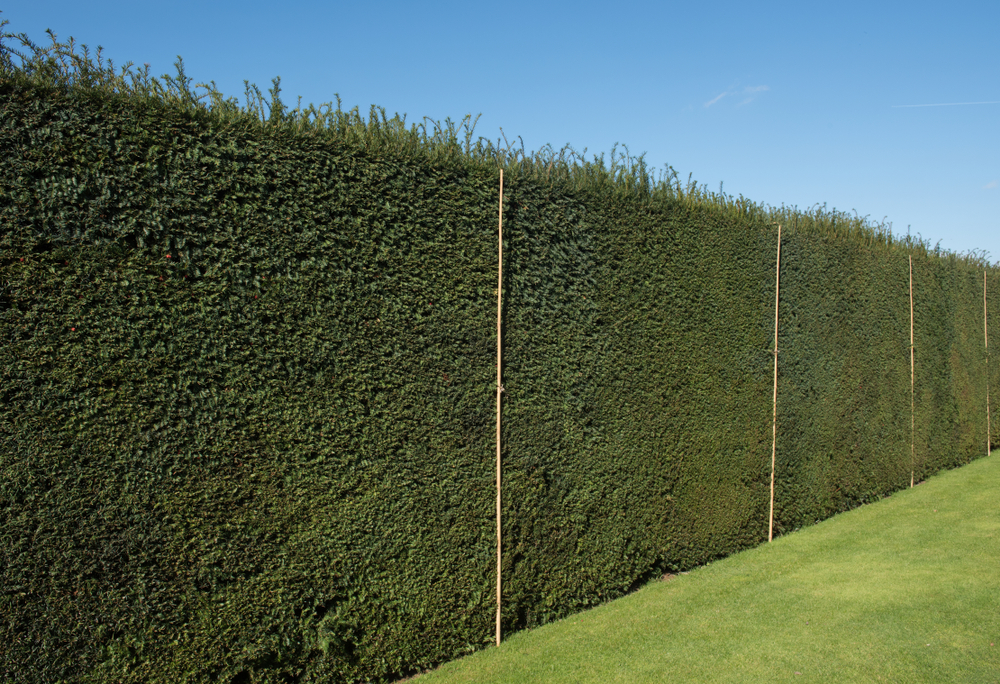
Aesthetically pleasing and ecologically valuable, hedges are a living fence that create privacy, acts as a wind break, and provides a habitat for birds and beneficial insects.
Before planting, you'll need to decide which hedge plants would grow best in your climate and for your purposes.
Consider the plant's height at maturity, whether it is evergreen or deciduous, how fast it grows, how often it will need to be pruned, and the spacing needed between plants.
Popular hedging plants include hawthorn, prickly ash, barberry, honey locust, boxwood, yew, privet, hemlock, and holly.
While you can purchase young plants from the nursery, many types of hedging plants are readily propagated from cuttings. If you have the time and patience, you can save a lot of money by growing your own hedging plants.
Although conventional hedging is simply plants spaced closely enough together to create a single mass of hedge, the centuries old art of hedge laying involves bending and partially cutting the branches to weave and intertwine the growth to make a barrier strong enough to keep livestock inside its confines.
Source: https://www.ruralsprout.com/inexpensive-diy-fence-ideas/
0 Response to "Easy Fence for Women to Put in"
Post a Comment